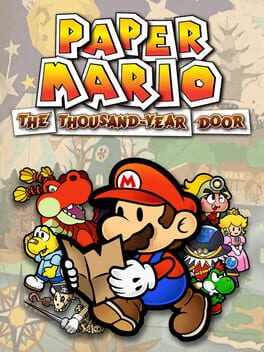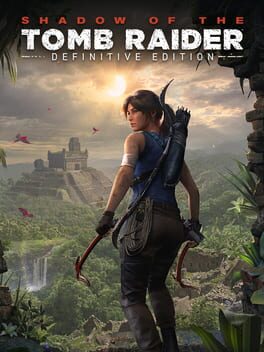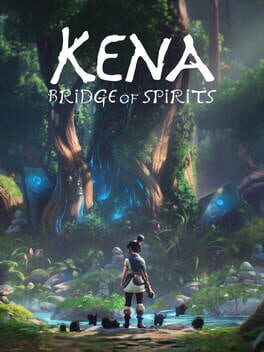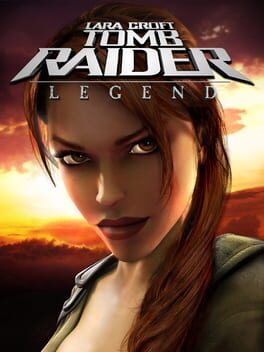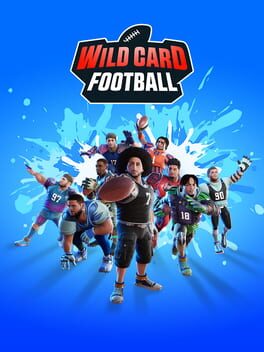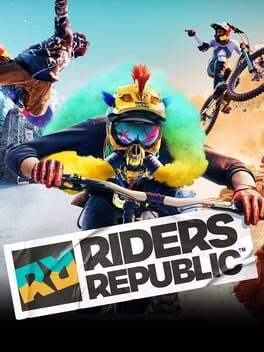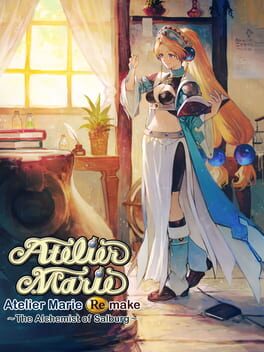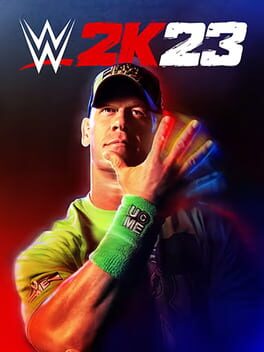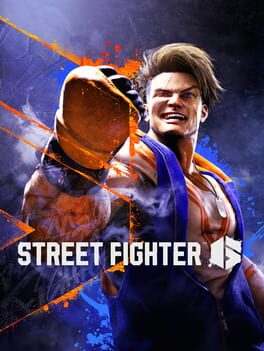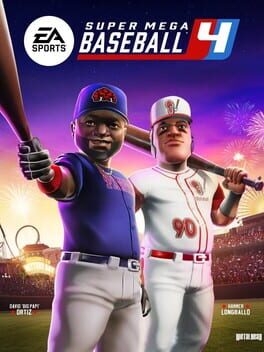ACasualPlayer
Bio
● Single-Player/Indie Gamer
● Puzzle Enthusiast
● Sim-Cade Sports Fan/Racer
● Resident of Resident Evil
● Tomb Raider/Lara Croft Fanboy
● Single-Player/Indie Gamer
● Puzzle Enthusiast
● Sim-Cade Sports Fan/Racer
● Resident of Resident Evil
● Tomb Raider/Lara Croft Fanboy
Badges

GOTY '23
Participated in the 2023 Game of the Year Event

1 Years of Service
Being part of the Backloggd community for 1 year

Loved
Gained 100+ total review likes

GOTY '22
Participated in the 2022 Game of the Year Event

Elite Gamer
Played 500+ games

Popular
Gained 15+ followers

Donor
Liked 50+ reviews / lists

Best Friends
Become mutual friends with at least 3 others

Noticed
Gained 3+ followers

Liked
Gained 10+ total review likes

Gamer
Played 250+ games

N00b
Played 100+ games
Favorite Games
532
Total Games Played
000
Played in 2024
024
Games Backloggd
Recently Played See More
Recently Reviewed See More
Wild Card Football plays more like NFL Street with Mario Kart-style power-ups in the form of wild cards. Every down before a play, the offense and defense can play wild cards with several effects ranging from but not limited to increasing/decreasing the speed or stamina of the whole team or specific players, instantly gaining extra yards, having the next tackle force a turnover, increase/decrease fumble/interception odds, blocking the opponent's cards, turning the team or ball carrier invisible, placing oil slicks on the field, giving the ball carrier a rotating bumper or electron (similar to the triple shell Mario Kart power-up), etc.
Wild cards can also be turned off (in Season and Quick Play only) for a traditional 7-on-7 arcade style football game, akin to a toned-down, but serviceable version of NFL Street. Gameplay is generally okay and feels fun, but spinning, hurdling, showboating, and calling audibles aren't present. A one button QTE pops up every time you hand the ball off to your running back for a running play, or when you attempt to break through the offensive line, which takes getting used to. You can stiff arm, use turbo and juke, though the AI has a tendency to stop you from running more than 2 yards. Passing mostly works, though manual catching has a tendency to cause your receiver to stop dead in his tracks for a moment, while the AI will frequently jump and swat your many pass attempts.
Game modes only consist of Quick Play, a shortened Season Mode, and Dream Team. No depth charts, stat tracking, drive summaries, roster management (aside from building your Dream Team), or anything in-depth exists. Dream Team is the main go to mode where you play the "Tour" option and play through games (some include objectives like first to score wins, play with no wild cards, stop the opponent from scoring in one drive, etc.) with your 49 Overall team, earning packs (lootboxes) to earn better cards, players, and customization options while leveling up your players by winning games. Inside of Dream Mode is an online league mode that acts as the ranked/competitive mode, where you play against online players Dream Teams to climb the division ranks to earn tickets. Tickets are another currency that can be used to instantly purchase any card (wild card, player or cosmetic) through an in-game shop. Cards you own can also be traded up for better or different cards. While this sounds microtransaction driven, at the time of this review 3 days after the games release, no microtransactions or option to buy premium currency exists.
The big issue with Wild Card Football is that for an arcade style sports game, the pace is quite a slog as games take a while to get through. A number of unnecessary celebrations, cut scenes, and animations play in between plays, making a standard 2-minute quarter game end up taking between 30-40 minutes. Add in playing against an online opponent with having to wait for them to choose their plays and cards, and you're looking at the same time or even longer just to finish one online game. Compare this to the classic NFL Blitz and NFL Street games where you could play through a game between 10-20 minutes.
Wild Card Football feels like a better arcade like attempt at replicating a sport over Saber's previous NBA 2K Playgrounds and WWE 2K Playgrounds offerings, but the slow pace, grindy unlock approach, and lack of long term content make it a game that is very hard to recommend - unless you're dying for an arcade football game and have no way to play NFL Blitz, Street or similar titles from the past generations. It's nice having another arcade sports game in a saturated market filled with sports simulation titles, but this game definitely needed more training and preparation before hitting the competition on the market.
Wild cards can also be turned off (in Season and Quick Play only) for a traditional 7-on-7 arcade style football game, akin to a toned-down, but serviceable version of NFL Street. Gameplay is generally okay and feels fun, but spinning, hurdling, showboating, and calling audibles aren't present. A one button QTE pops up every time you hand the ball off to your running back for a running play, or when you attempt to break through the offensive line, which takes getting used to. You can stiff arm, use turbo and juke, though the AI has a tendency to stop you from running more than 2 yards. Passing mostly works, though manual catching has a tendency to cause your receiver to stop dead in his tracks for a moment, while the AI will frequently jump and swat your many pass attempts.
Game modes only consist of Quick Play, a shortened Season Mode, and Dream Team. No depth charts, stat tracking, drive summaries, roster management (aside from building your Dream Team), or anything in-depth exists. Dream Team is the main go to mode where you play the "Tour" option and play through games (some include objectives like first to score wins, play with no wild cards, stop the opponent from scoring in one drive, etc.) with your 49 Overall team, earning packs (lootboxes) to earn better cards, players, and customization options while leveling up your players by winning games. Inside of Dream Mode is an online league mode that acts as the ranked/competitive mode, where you play against online players Dream Teams to climb the division ranks to earn tickets. Tickets are another currency that can be used to instantly purchase any card (wild card, player or cosmetic) through an in-game shop. Cards you own can also be traded up for better or different cards. While this sounds microtransaction driven, at the time of this review 3 days after the games release, no microtransactions or option to buy premium currency exists.
The big issue with Wild Card Football is that for an arcade style sports game, the pace is quite a slog as games take a while to get through. A number of unnecessary celebrations, cut scenes, and animations play in between plays, making a standard 2-minute quarter game end up taking between 30-40 minutes. Add in playing against an online opponent with having to wait for them to choose their plays and cards, and you're looking at the same time or even longer just to finish one online game. Compare this to the classic NFL Blitz and NFL Street games where you could play through a game between 10-20 minutes.
Wild Card Football feels like a better arcade like attempt at replicating a sport over Saber's previous NBA 2K Playgrounds and WWE 2K Playgrounds offerings, but the slow pace, grindy unlock approach, and lack of long term content make it a game that is very hard to recommend - unless you're dying for an arcade football game and have no way to play NFL Blitz, Street or similar titles from the past generations. It's nice having another arcade sports game in a saturated market filled with sports simulation titles, but this game definitely needed more training and preparation before hitting the competition on the market.
Largely the same as Super Mega Baseball 3, for better or for worse. The new (optional) Shuffle Draft option at the start of Franchise mode lets you pick from a pool of players to build your dream team. With real-life MLB legends now in the game, you can have a full Legends Franchise, a mix, or a classic Franchise of fictional SMB players. The new player traits are a welcome bonus that makes gameplay a bit more dynamic. Most players now have traits (abilities) that can be positive or negative. These range from increased pitching stats when pitching a 0-0 count, higher contact hitting when batting with 2 strikes, increased chance of dropping caught balls, increased running speed when stealing a base, etc. Traits fall under different chemistry categories, which adds some strategy in developing your team.
After some games, loyalty moments pop up which will affect a players loyalty (basically, a random question such as "You played a great game today, who had the best performance?), and picking between one of the two pre-selected players will increase their loyalty. Some instances pop up where you will end up decreasing player loyalty. At the end of a season, you can resign or release your players (loyalty comes into play here as more loyal players will be willing to stay for a lower salary and less loyal players will ask for a higher salary), in addition to signing free agents in the off-season. Sadly, no player trades are present. Training players works the same as in SMB3, but with much more opportunities along with random chances that can give pitchers a new pitch, and chances to gain or lose certain player traits.
Graphically, the game looks somewhat better. Player models look a bit worse as faces are more cartoony and for some reason, most players are fat or stocky.
The UI could use some work as some options such as substituting pitchers and navigating players in free agency menus require extra button presses.
The soundtrack is decent, mostly made up of songs and instrumentals probably created by local, no-name bands and music artists. The sound effects are a bit too zany and over-the-top, and some of the umpires come off as very energetic and enthusiastic in their strike call outs.
The Legends implementation feels lazy. It's nice having them there, though they mostly look like a step above the in-game created players.
Lastly, customization is pretty much the same. Some new player faces and models exist along with a boatload of player names for the announcer to call out during at-bat/pitch situations but expect the same level of SMB3's creation mode.
Some issues can probably be fixed in later updates as Super Mega Baseball 4 just released, but this entry is a decent improvement over its predecessor.
After some games, loyalty moments pop up which will affect a players loyalty (basically, a random question such as "You played a great game today, who had the best performance?), and picking between one of the two pre-selected players will increase their loyalty. Some instances pop up where you will end up decreasing player loyalty. At the end of a season, you can resign or release your players (loyalty comes into play here as more loyal players will be willing to stay for a lower salary and less loyal players will ask for a higher salary), in addition to signing free agents in the off-season. Sadly, no player trades are present. Training players works the same as in SMB3, but with much more opportunities along with random chances that can give pitchers a new pitch, and chances to gain or lose certain player traits.
Graphically, the game looks somewhat better. Player models look a bit worse as faces are more cartoony and for some reason, most players are fat or stocky.
The UI could use some work as some options such as substituting pitchers and navigating players in free agency menus require extra button presses.
The soundtrack is decent, mostly made up of songs and instrumentals probably created by local, no-name bands and music artists. The sound effects are a bit too zany and over-the-top, and some of the umpires come off as very energetic and enthusiastic in their strike call outs.
The Legends implementation feels lazy. It's nice having them there, though they mostly look like a step above the in-game created players.
Lastly, customization is pretty much the same. Some new player faces and models exist along with a boatload of player names for the announcer to call out during at-bat/pitch situations but expect the same level of SMB3's creation mode.
Some issues can probably be fixed in later updates as Super Mega Baseball 4 just released, but this entry is a decent improvement over its predecessor.
Hi-Fi Rush is best described as a linear 3D character action beat-em up with rhythm game combat sequences, a Sunset Overdrive aesthetic, a comic book feel with a bit of a Persona 5-lite look, and the visual presentation and story of a Saturday Morning Cartoon.
While Hi-Fi Rush has the standard combat action gameplay with light platforming sections, light and heavy attacks along with a dodge button, collectible items to upgrade your health and special meters, data pads with information about the lore of the game world and gears to use to purchase more attacks and abilities, Hi-Fi Rush adds a gimmick to its combat. Everything in the game from the soundtrack to the environment pulses to the rhythm. Pressing the attack button at the right moment (or on-beat as the game refers to it) will give you a damage boost in combat. The game doesn't penalize you for attacking offbeat as this just gives you a damage boost in certain instances, so the game can be played perfectly fine like a normal action game. Though, there are cues and accessibility options to make attacking on-beat much easier.
Combat also includes a Devil May Cry-like letter grading system based on attacking, parrying, and landing attacks on beat. With multiple difficulties between Easy and Very Hard, this provides a good level of replayability for anyone wanting to chase after high scores.
Throughout the game, Chai will meet new characters in his quest to take down Spectra. These characters can be used in combat as extra tools in Chai's arsenal, and will also be used while moving and platforming through levels to solve mostly straightforward rhythm puzzles, hit switches, and break down walls and barriers along with stunning enemies and breaking their shields.
Between tracks (levels and missions), Chai can roam around a hideout that acts as a central hub. This small hub allows Chai to chat with the few friends he meets during the story (nothing Bioware-like, simply picking a few options), check and purchase upgrades, view found graffiti and collectibles, and even participate in pretty feature-rich training simulator mode akin to the practice modes in many modern day fighting games.
Boss battles are highly entertaining as every boss has different phases which can take the form of a typical 3D action battle, a timed mini-game, or a short Guitar Hero-esque rhythm section. As a bonus, dying during boss battles only puts you back to the beginning of the last phase you completed, so no having to play the entire battle all over again upon death.
As far as issues go, my only real (albeit minor) complaint with Hi-Fi Rush is that the combat lacks the ability to lock onto enemies. Combat works very well and you eventually gain the ability to launch yourself directly toward an enemy you're facing for direct combos, but a lock-on option would have been a handy utility with how frantic and hyperactive combat sections can get.
Microsoft not only did a good job shadow-dropping this game at the start of the year but also shadow-dropping an exclusive title bustling with flash, substance, style, and flashiness with 8s, 9s, and 10s across the board. For people who have a low tolerance for or dislike timed/rhythm-based button inputs and quick time events, Hi-Fi Rush may offer more frustration and difficulty than fun. Otherwise, fans of Devil May Cry, pre-reboot God of War, Bayonetta, and similar games may find Hi-Fi Rush to be a very worthy contender.
While Hi-Fi Rush has the standard combat action gameplay with light platforming sections, light and heavy attacks along with a dodge button, collectible items to upgrade your health and special meters, data pads with information about the lore of the game world and gears to use to purchase more attacks and abilities, Hi-Fi Rush adds a gimmick to its combat. Everything in the game from the soundtrack to the environment pulses to the rhythm. Pressing the attack button at the right moment (or on-beat as the game refers to it) will give you a damage boost in combat. The game doesn't penalize you for attacking offbeat as this just gives you a damage boost in certain instances, so the game can be played perfectly fine like a normal action game. Though, there are cues and accessibility options to make attacking on-beat much easier.
Combat also includes a Devil May Cry-like letter grading system based on attacking, parrying, and landing attacks on beat. With multiple difficulties between Easy and Very Hard, this provides a good level of replayability for anyone wanting to chase after high scores.
Throughout the game, Chai will meet new characters in his quest to take down Spectra. These characters can be used in combat as extra tools in Chai's arsenal, and will also be used while moving and platforming through levels to solve mostly straightforward rhythm puzzles, hit switches, and break down walls and barriers along with stunning enemies and breaking their shields.
Between tracks (levels and missions), Chai can roam around a hideout that acts as a central hub. This small hub allows Chai to chat with the few friends he meets during the story (nothing Bioware-like, simply picking a few options), check and purchase upgrades, view found graffiti and collectibles, and even participate in pretty feature-rich training simulator mode akin to the practice modes in many modern day fighting games.
Boss battles are highly entertaining as every boss has different phases which can take the form of a typical 3D action battle, a timed mini-game, or a short Guitar Hero-esque rhythm section. As a bonus, dying during boss battles only puts you back to the beginning of the last phase you completed, so no having to play the entire battle all over again upon death.
As far as issues go, my only real (albeit minor) complaint with Hi-Fi Rush is that the combat lacks the ability to lock onto enemies. Combat works very well and you eventually gain the ability to launch yourself directly toward an enemy you're facing for direct combos, but a lock-on option would have been a handy utility with how frantic and hyperactive combat sections can get.
Microsoft not only did a good job shadow-dropping this game at the start of the year but also shadow-dropping an exclusive title bustling with flash, substance, style, and flashiness with 8s, 9s, and 10s across the board. For people who have a low tolerance for or dislike timed/rhythm-based button inputs and quick time events, Hi-Fi Rush may offer more frustration and difficulty than fun. Otherwise, fans of Devil May Cry, pre-reboot God of War, Bayonetta, and similar games may find Hi-Fi Rush to be a very worthy contender.
